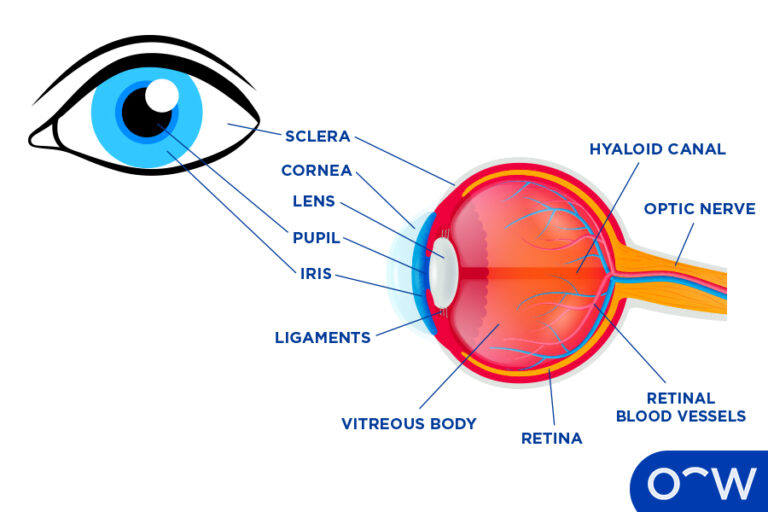Compare Car Battery Brands: Your Comprehensive Guide to Choosing the Right Powerhouse
Compare Car Battery Brands: Your Comprehensive Guide to Choosing the Right Powerhouse cars.truckstrend.com
The humble car battery, often overlooked until it fails, is the heart of your vehicle’s electrical system. It provides the initial surge of power to crank the engine, and then supports various electronic components when the engine isn’t running. Choosing the right car battery isn’t merely about picking the cheapest option; it’s about ensuring reliable starts, optimal performance, and long-term peace of mind. With a myriad of brands and specifications on the market, comparing car battery brands becomes a critical exercise to find the perfect match for your vehicle and driving habits. This comprehensive guide will illuminate the path, helping you navigate the complexities and make an informed decision.
Understanding Car Battery Basics: The Foundation of Comparison
Compare Car Battery Brands: Your Comprehensive Guide to Choosing the Right Powerhouse
Before diving into brand specifics, it’s essential to grasp the fundamental types and specifications of car batteries. This knowledge forms the bedrock for effective comparison.
-
Types of Car Batteries:
- SLI (Starting, Lighting, Ignition) / Flooded Lead-Acid Batteries: These are the most common and traditional batteries. They contain liquid electrolyte and require occasional maintenance (checking water levels in some cases, though many are now "maintenance-free" or "sealed"). They are cost-effective and reliable for standard applications.
- AGM (Absorbent Glass Mat) Batteries: A step up from SLI, AGM batteries use fiberglass mats to absorb the electrolyte, making them spill-proof and more resistant to vibration. They offer higher CCA (Cold Cranking Amps), faster recharging, and longer life cycles, making them ideal for vehicles with start-stop technology or extensive electronics.
- Gel Cell Batteries: Similar to AGM, but use a gelled electrolyte. They are very resistant to vibration and extreme temperatures but typically have lower CCA ratings and can be sensitive to overcharging. Less common for standard automotive use.
- Lithium-ion Batteries (LiFePO4): Emerging in the automotive market, especially for high-performance or specialized applications. They are significantly lighter, offer extremely high power density, and have a very long cycle life. However, they are considerably more expensive and require specific charging systems.

-
Key Specifications to Look For:

- CCA (Cold Cranking Amps): This is the most crucial rating. It indicates the battery’s ability to deliver current at 0°F (-18°C). A higher CCA means better starting power in cold weather. Always match or exceed your vehicle manufacturer’s recommended CCA.
- RC (Reserve Capacity): This measures how long your battery can power essential accessories if your alternator fails. It’s the number of minutes a fully charged battery can deliver 25 amps at 80°F (27°C) before its voltage drops below 10.5 volts. Higher RC means more buffer time.
- Voltage: Standard automotive batteries are 12-volt.
- Group Size: This refers to the battery’s physical dimensions (length, width, height) and terminal configuration. It’s critical to match the group size to ensure the battery fits securely in your vehicle’s battery tray and the terminals align correctly.
- Amperage-Hour (Ah): While less common for starting batteries, it measures the battery’s total energy storage capacity, useful for deep-cycle applications.

Top Car Battery Brands in the Market
The market is flooded with battery brands, many of which are manufactured by a few major players. Here’s a look at some of the most reputable and widely available brands, highlighting their general strengths:
- Optima Batteries: Renowned for their unique spiral cell design (AGM), offering high performance, excellent vibration resistance, and long life. Popular among off-roaders, hot rodders, and vehicles with high power demands.
- Interstate Batteries: A household name, known for reliability and a vast network of dealers. They offer a wide range of SLI and AGM batteries for various applications, generally considered a solid, dependable choice.
- DieHard (Advance Auto Parts/Clarios): Once Sears’ flagship brand, now widely available. DieHard batteries are known for their strong CCA ratings and durability, offering good value across different lines (Gold, Platinum).
- ACDelco (General Motors Brand): While often associated with GM vehicles, ACDelco batteries are available for many makes and models. They are known for consistent quality and reliability, often coming as OEM equipment.
- Bosch: A global automotive supplier, Bosch offers high-quality batteries known for their robust construction and reliable performance, particularly their AGM lines.
- Exide: Another long-standing brand with a global presence, Exide offers a comprehensive range of batteries for various applications, from standard SLI to advanced AGM.
- Yuasa: A leading Japanese manufacturer, Yuasa is particularly strong in powersports batteries but also produces high-quality automotive batteries known for their longevity and performance.
- Duracell (East Penn Manufacturing): Leveraging the strong brand recognition of Duracell, these batteries are manufactured by East Penn (which also produces Deka batteries) and offer reliable starting power and decent warranties.
Factors to Consider When Comparing Brands
Beyond just the brand name, a systematic approach to evaluating specific battery attributes will lead you to the best choice.
- Performance (CCA & RC): Always prioritize matching or exceeding your vehicle’s recommended CCA. If you live in a cold climate, err on the side of higher CCA. RC is crucial for vehicles with significant electronic loads or if you frequently make short trips.
- Longevity & Durability: While hard to quantify directly, look at the battery’s warranty. A longer warranty (e.g., 36 months free replacement) often indicates the manufacturer’s confidence in the product’s lifespan. Read user reviews for real-world durability experiences.
- Technology & Type (SLI vs. AGM): Consider your vehicle’s needs. If it has start-stop technology, an AGM battery is essential. If you have a standard older vehicle, an SLI might suffice. AGM batteries offer superior performance, especially in extreme temperatures, and are more resistant to vibration, making them suitable for demanding conditions.
- Warranty: This is your safety net. A good warranty covers defects and provides free replacement within a specified period (e.g., 24, 36, 48 months). Beyond that, some offer a prorated warranty. Understand the terms and conditions.
- Price vs. Value: The cheapest battery might cost you more in the long run if it fails prematurely. Balance the upfront cost with the battery’s expected lifespan, performance, and warranty. A slightly more expensive battery with better specs and a longer warranty often represents better value.
- Vehicle Compatibility (Group Size & Terminal Location): This is non-negotiable. Always check your owner’s manual or use an online battery finder tool to confirm the correct group size and terminal configuration (top post, side post, etc.).
- Brand Reputation & Reviews: Look at aggregate customer reviews on reputable automotive sites, retailer websites, and independent forums. Pay attention to recurring themes regarding performance, longevity, and customer service.
- Maintenance Requirements: Most modern batteries are "maintenance-free" sealed units. If you opt for a traditional flooded battery, ensure you’re comfortable with occasional terminal cleaning and, for some, checking electrolyte levels.
How to Compare Car Battery Brands (Practical Guide)
Follow these steps to make an informed decision:
- Identify Your Vehicle’s Requirements: Consult your car’s owner’s manual or use online battery finder tools (available on most auto parts store websites) to determine the correct Group Size, minimum CCA, and preferred battery type (SLI or AGM).
- Research Top Brands: Based on your vehicle’s needs and the general reputation discussed above, identify 3-5 potential brands.
- Compare Specifications: For each shortlisted brand, find batteries that match your Group Size. Then, compare their CCA and RC ratings. Aim for CCA ratings that meet or exceed your vehicle’s requirements.
- Read Reviews: Search for independent reviews and customer feedback specifically for the models you’re considering. Look for patterns in complaints or praises.
- Check Warranties: Compare the warranty terms (free replacement period, prorated period) across brands. A longer free replacement period is always a plus.
- Compare Prices: Once you have a few strong contenders based on performance and warranty, compare their prices from different retailers (online and local). Factor in any installation services offered.
- Consider Installation: Decide if you’ll install it yourself or have a professional do it. Some retailers offer free installation with purchase.
Tips for Maximizing Battery Life (Regardless of Brand)
Even the best battery won’t last if not cared for.
- Regular Maintenance: Keep battery terminals clean and free of corrosion. Use a wire brush and a baking soda/water solution.
- Avoid Short Trips: Frequent short trips (under 20 minutes) don’t allow the alternator enough time to fully recharge the battery, leading to sulfation and premature wear.
- Use a Battery Tender/Maintainer: If your vehicle sits for extended periods (weeks or months), a smart battery tender will keep it charged and prevent discharge.
- Check Charging System: Ensure your alternator is functioning correctly. A failing alternator can undercharge or overcharge the battery, shortening its life.
- Insulate in Extreme Weather: In very cold climates, a battery blanket can help maintain temperature and starting power. In hot climates, ensure proper ventilation to prevent overheating.
Potential Challenges & Solutions
- Overwhelming Choices: Stick to reputable brands and use your vehicle’s specific requirements (Group Size, CCA) as filters to narrow down options.
- Counterfeit Batteries: Purchase from authorized dealers, reputable auto parts stores, or trusted online retailers to avoid fake or substandard products.
- Incorrect Installation: If unsure, always opt for professional installation to prevent damage to the battery or vehicle’s electrical system.
- Disposing of Old Batteries: Car batteries contain hazardous materials. Most retailers that sell new batteries will accept your old one for recycling, often for a core charge refund.
Car Battery Brands: Sample Comparison Table
Please note: Prices are estimated ranges and can vary significantly based on vehicle type, specific battery model, retailer, and promotions. Warranties are typical for their standard lines.
| Brand | Typical Battery Type | CCA Range (Approx.) | RC Range (Approx.) | Typical Warranty (Free Replacement) | Price Range (Est.) | Key Feature/Benefit |
|---|---|---|---|---|---|---|
| Optima | AGM (RedTop/YellowTop) | 720-950 | 90-155 | 36-48 months | $$$ | High performance, extreme vibration resistance, long life |
| Interstate | SLI, AGM | 600-800 | 100-140 | 24-36 months | $$ | Widespread availability, reliable, good all-rounder |
| DieHard | SLI, AGM | 600-850 | 100-150 | 24-36 months | $$-$$$ | Strong CCA, good durability, often on sale |
| ACDelco | SLI, AGM | 550-750 | 90-130 | 18-36 months | $-$$ | OEM quality, consistent performance |
| Bosch | SLI, AGM | 600-850 | 100-140 | 24-36 months | $$-$$$ | Robust construction, reliable starts |
| Exide | SLI, AGM | 550-780 | 90-135 | 24-36 months | $-$$ | Comprehensive range, long history |
| Yuasa | SLI, AGM | 500-700 | 80-120 | 18-36 months | $-$$ | Reliable for standard use, especially in Asian imports |
| Duracell | SLI, AGM | 580-780 | 95-135 | 24-36 months | $-$$ | Good value, widely available |
Price Scale: $ (Budget-friendly), $$ (Mid-range), $$$ (Premium)
Frequently Asked Questions (FAQ)
Q1: How often should I replace my car battery?
A1: On average, a car battery lasts 3-5 years. However, this can vary greatly depending on climate, driving habits, and battery type. Regular testing can help determine its health.
Q2: What’s the difference between CCA and RC?
A2: CCA (Cold Cranking Amps) measures the power a battery can deliver to start your engine in cold weather. RC (Reserve Capacity) measures how long the battery can power essential accessories if your alternator fails.
Q3: Can I put an AGM battery in a car that came with a flooded battery?
A3: Yes, in most cases, you can upgrade from a flooded battery to an AGM. AGM batteries offer better performance, longer life, and are maintenance-free. However, AGM batteries require a slightly different charging profile, and some newer vehicles might need their Battery Management System (BMS) reprogrammed for optimal charging.
Q4: Is a higher CCA always better?
A4: Not necessarily. While higher CCA provides more starting power, significantly exceeding your vehicle’s recommendation is often unnecessary and might cost more without tangible benefits. Match or slightly exceed the manufacturer’s specified CCA.
Q5: How do I know what size battery my car needs?
A5: The best way is to check your car’s owner’s manual. Alternatively, use the battery finder tools on auto parts store websites, which require your vehicle’s year, make, and model.
Q6: What are the signs of a dying car battery?
A6: Common signs include slow engine cranking, dimming headlights or interior lights, the "check engine" or battery warning light on the dashboard, and consistent need for jump-starts.
Q7: How do I dispose of an old car battery?
A7: Car batteries are hazardous waste. Do not throw them in regular trash. Most auto parts stores and retailers that sell car batteries will accept your old battery for recycling, often providing a core charge refund if you paid one.
Conclusion
Comparing car battery brands is an essential step in maintaining your vehicle’s reliability. By understanding the different types, key specifications, and reputable brands, you empower yourself to make an informed decision. Prioritize matching your vehicle’s specific requirements, consider the balance between performance, longevity, and warranty, and always factor in real-world reviews. A well-chosen battery isn’t just a purchase; it’s an investment in countless reliable starts and the smooth operation of your vehicle, ensuring you’re never left stranded.



